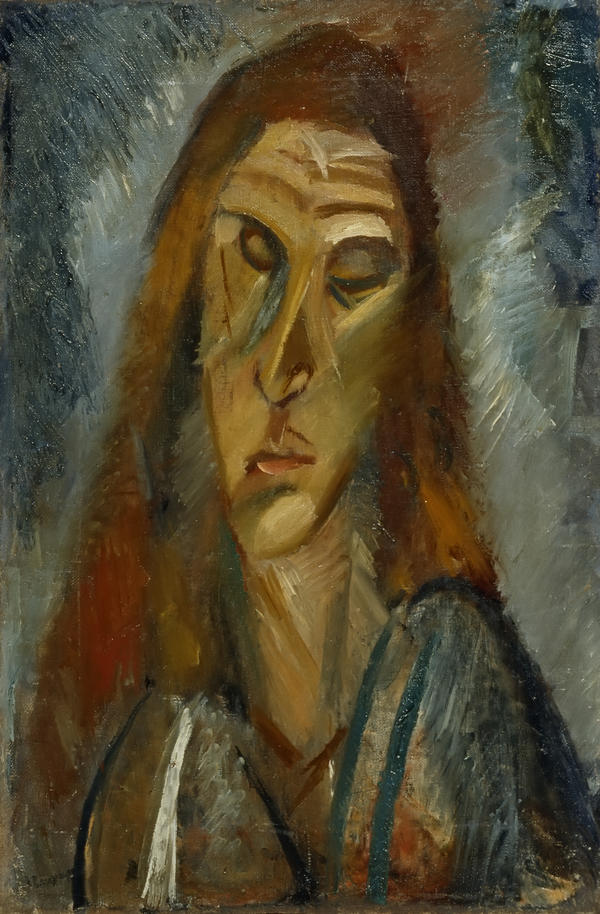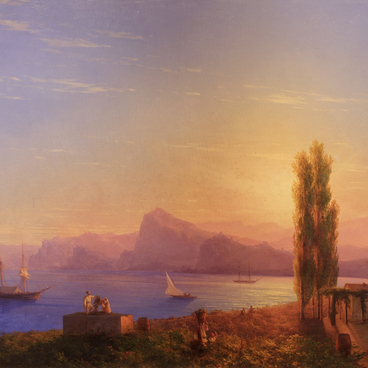The earliest avant-garde artwork in the museum collection is “Female Portrait”, originally known as “Head”. It was painted by Vasily Chekrygin when he was only fourteen years old. The artist was born in Zhizdra, Kaluga Governorate, in 1897. At a very young age, he began studying icon painting at the Kiev Pechersk Lavra. Later, he enrolled in the Moscow School of Painting, Sculpture and Architecture where he met Vladimir Mayakovsky and other Futurists.
At avant-garde exhibition No. 4 (“Futurists, Rayonists, Primitivists”) in 1914, Vasily Chekrygin demonstrated 15 paintings, including this one that is kept in Syktyvkar. That same year, due to his “harmful influence”, or his commitment to Futurism, he was denied a scholarship and expelled from the school. After the Russian Revolution of 1917, Vasily Chekrygin co-founded the “Art is Life” Union of Artists and Poets, also known as “Makovets” (the name is derived from the hill on which the famous Trinity Lavra of St. Sergius stands). In 1922, his life was cut short by his death in a railway accident at the age of 25. Vasily Chekrygin left behind a lot of charcoal drawings and several paintings. He also is regarded as the first illustrator of Vladimir Mayakovsky’s works.
In 1913, Vladimir Mayakovsky published his first collection of poems titled “I!”. It was printed using the lithographic process with a print run of only 300 copies. Like other printed collections of poems by Futurists, the book challenged the aesthetic preferences of the “Mir iskusstva” (World of Art) and “Apollo” associations. The use of gray paper, cardboard covers, careless binding, and handwriting (“letters set loose”) was meant to shock the public and mock the traditions. It was “a slap in the face of public taste.”
Vasily Chekrygin created several drawings that
resembled Novgorod frescoes but had nothing in common with Mayakovsky’s texts.
He depicted angels and elders on their knees, blessing animals. These images
were harmonious and spiritual, anticipating Chekrygin’s later fascination with
Nikolai Fyodorov’s “Philosophy of the Common Task”. The female portrait from
the collection of the National Gallery of the Komi Republic also has
similarities to icon painting, with its highlights, elongated proportions, and
poetic sentiment.


